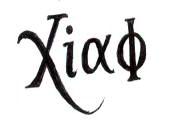American tutelage in the Philippines (Manila Times Walking History)
by xiaochua
By Michael Charleston “Xiao” Chua
September 12, 2020
“LAY down your arms and pick up the books.” This was already the call the Americans were making to themselves even before the smoke of war with the Filipinos had not yet settled. Wasn’t it their real mission to “Christianize” and “civilize” their little brown brothers here as our tutor (under tutelage)? And so, they started their quest to open education to a wider Filipino populace a few days after Dewey’s victory in May 1898. The first American teachers here were also the American volunteer-soldiers who taught 4,000 students in 39 schools.
In 1901, sincerely believing in the righteousness of their cause, American school teachers started coming to the Philippines. The first among them arrived in the boat called “Thomas,” hence, the “Thomasites.” Although the old Spanish colonial regime intended to make education more public, it was the Americans who were able to fully implement this policy. Every town was provided with bahay kubo-inspired school building designs, called the Gabaldon schoolhouses (named after the lawmaker who sponsored the law), set 3 kilometers apart in order that kids would not have to walk long to get to school. The Americans, knowing that there would be a need to pass the burden of teaching to the Filipinos themselves sooner or later, established the Philippine Normal School in 1906 and later, the University of the Philippines in 1908. Never before was formal instruction widely available to the people of the Philippines.
And seemingly true to form, in wanting to ring the bells of liberty for the Filipinos, the United States allowed freedom of worship, which paved the way for the establishment of the various religious denominations in the country and the emergence of the indigenous Filipino church, the Iglesia ni Cristo, in 1914. It also implemented public health and sanitation systems which dramatically improved the lives of the people.
In the same year that the revolutionary president Macario Sakay was executed in 1907, one of his demands, the Philippine Assembly, was formed. In the same year that the last battle of the Philippine-American War was waged in Bud Bagsak in Jolo, Sulu, in 1913, the Americans started to allow Filipinos to be part of the bureaucracy, a move known as “Filipinization.” Eventually, with the enactment of the Jones Law in 1916, which promised eventual Independence once a “stable government is established,” the Philippine Senate was born.
Despite all these steps to train Filipinos for self-governance, it can be argued that the colonial system of education tightened the grip of the Americans on the minds and hearts of the Filipinos, proving that it is really not about being educated per se, but what one has learned in that education. And the colonial mindset was being formed on the very first day of school, when one was taught the alphabet: “A is for apple.” And a people in the land without apples started to crave for apples and became a market for other American goods. Filipinos learned more about the heroes of the US, and their books reflected the greatness of America.
The Americans also used the new technology of radio to spread American music and consumer goods but since they lacked the personnel, Filipino announcers killed time inviting Filipino singers to sing kundiman, and colonial radio was appropriated to spread our own culture.
But as the public school system made possible the primacy of English as the language of learning, business and government, not only did our colonial dependency deepen, but the great cultural divide between the haves and the have-nots widened. In the continuing spirit of kapatiran, a number of social movements strengthened advocating kaginhawahan for all and not just a few. It climaxed in the Sakdal agrarian revolt that occurred in many places in 1935. One orator expressed their sentiments in words, “Give me land. Land to own. Land unbeholden to any tyrant. Land that will be free. Give me land for I am starving…. I am poor but I will pay it! I will work, work until I fall from weariness for my privilege, for my inalienable right to be free!”
Major Filipino statesmen headed to the United States to lobby the US Congress for an independence bill. Finally, the Tydings-McDuffie Law was enacted in 1935 and a 10-year transition period was provided for Filipinos to handle most of the affairs of government. The leading Filipino politicians since 1907 — Manuel Quezon and Sergio Osmeña, became president and vice president of the Philippine Commonwealth. Despite the challenges, Filipino leadership offered a vision of social justice and readiness to face modernity. Women were given the right to vote and the use of the national language was implemented. Quezon even undertook to take care of 1,300 European Jews fleeing from the Nazis and showcased Filipino pakikipagkapwa-tao.
But we will never know what more could have been accomplished by a Filipino leadership in transition, because halfway through their tenure, the winds of war swept in.
